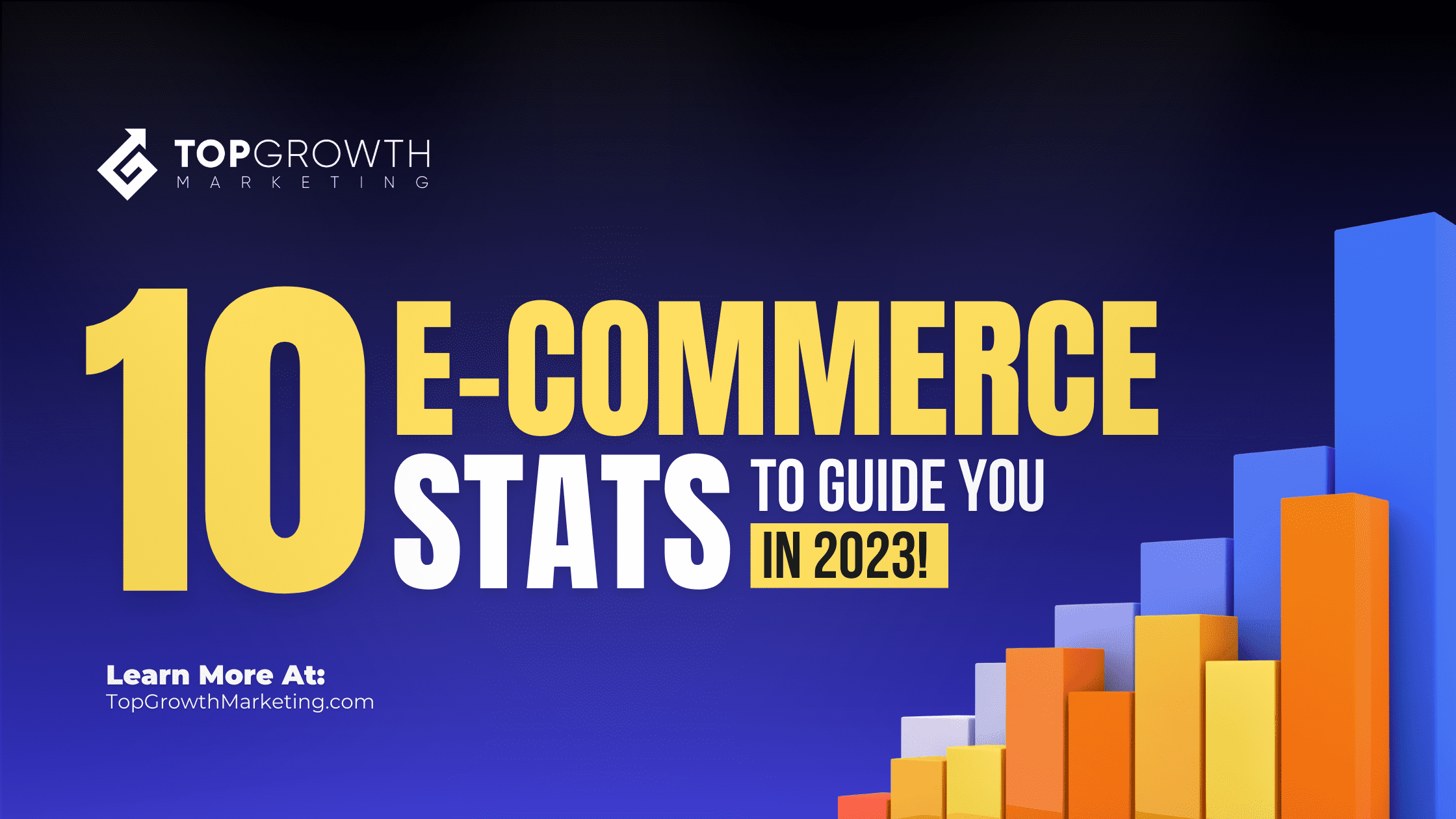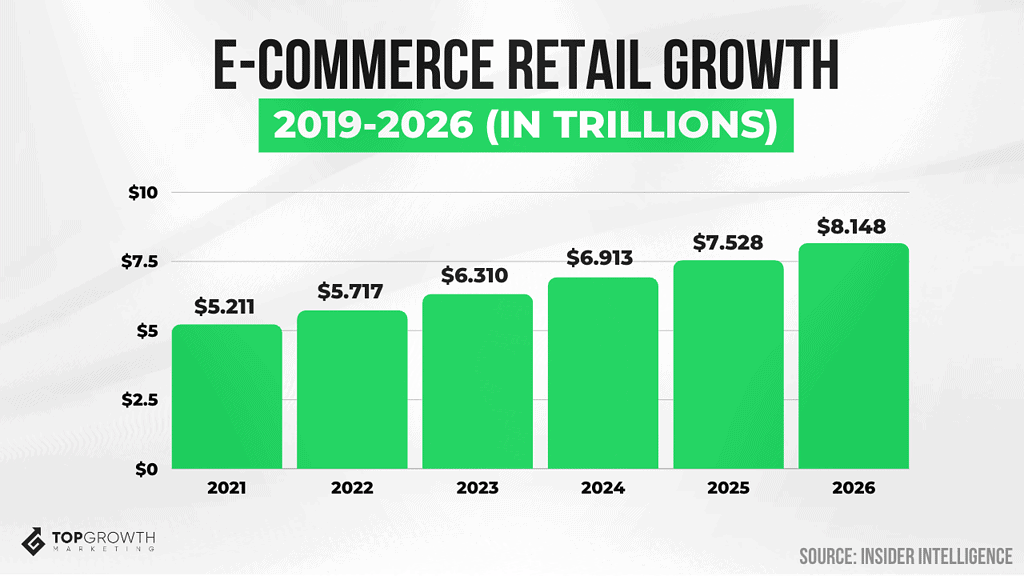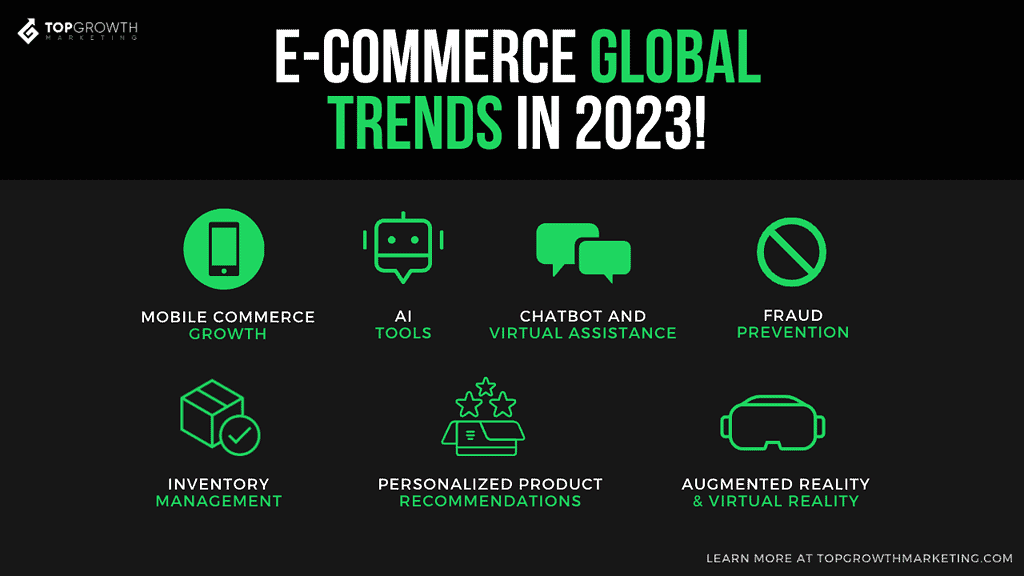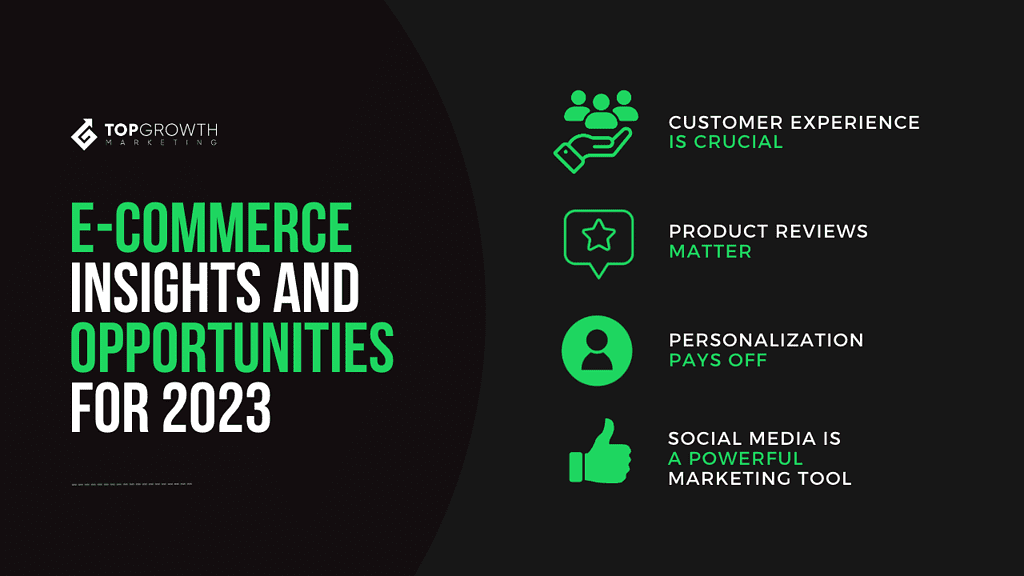Running an eCommerce business means constantly adapting to changes in consumer behavior and market trends. That’s where benchmarking, and eCommerce stats come in handy.
They provide valuable insights into what people are buying online, how they’re shopping, and what ad and email acquisition strategies are working best.
Global e-commerce sales are projected to reach $6.4 trillion by 2024 (eMarketer)? This is just one example of how e-commerce is rapidly growing and evolving.
By paying attention to e-commerce stats, you’ll be able to gain valuable insights into what your customers are looking for and how you can improve your online store and marketing strategy.
Whether it’s offering free shipping, providing personalized experiences, or paying attention to product reviews, understanding these trends can give you a competitive edge and help you succeed in the ever-changing world of e-commerce.
So if you’re ready to take your online business to the next level, start paying attention to the latest e-commerce statistics and trends. Let’s dive in and see what the future has in store for your business!
What e-commerce stats should I keep an eye on in 2023?
We gathered some of the main e-commerce statistics so you can have a starting point. Well, numbers can, sometimes, be hard to interpret and use on a daily basis to increase profit. That’s why we’re sharing some of them but revealing insights and trends that are related.
- Mobile devices accounted for 54.8% of all e-commerce sales worldwide in 2021, up from 39.6% in 2018. Source: Statista
- China alone accounts for nearly half of all e-commerce sales worldwide. Source: eMarketer
- Customer experience is as important as products or services, with 80% of consumers saying it’s crucial. Source: Salesforce
- 91% of consumers read online reviews before making a purchase, and 84% trust online reviews as much as personal recommendations. Source: BrightLocal
- Personalized emails have an open rate of 29.9%, compared to 18.3% for non-personalized emails. Source: Epsilon
- Social media is used by 54% of social browsers to research products. Source: Hootsuite
- Online shoppers abandon their carts 70% of the time on average. Source: Baymard Institute
- Free shipping is the most important factor for 79% of online shoppers, followed by easy returns and refunds (73%) and price (70%). Source: BigCommerce
- By understanding and leveraging these e-commerce statistics, you can improve your online sales, customer satisfaction, and competitive advantage.
One of the niches that explain how e-commerce has been growing exponentially is retail. And it’s expected to grow more and more.
Now, let’s get to the trends and insights coming from these numbers. Here are the 10 e-commerce stats to guide in 2023.
E-commerce stats lead to the main e-commerce trends in 2023
E-commerce stats can point out bigger trends in e-commerce, and you should definitely be aware of them. Take notes and start applying.
- Mobile commerce (m-commerce) growth
With the increasing use of mobile devices, it’s crucial for e-commerce businesses to optimize their mobile platforms for seamless shopping experiences. In 2023, m-commerce is expected to account for a significant percentage of e-commerce sales.
- Personalization
Consumers expect personalized experiences when shopping online, with tailored recommendations and targeted advertising. E-commerce businesses should prioritize personalization to increase customer engagement and loyalty.
- Social media shopping
Social media platforms are increasingly becoming popular channels for e-commerce sales. Brands should focus on building a strong social media presence and incorporating shopping features to drive sales.
- Voice search and AI
With the rising popularity of smart speakers and voice assistants, e-commerce businesses should optimize their platforms for voice search and implement AI-powered features to enhance customer experiences.
- Fulfillment options
Customers demand fast and flexible delivery options, such as same-day or next-day delivery and buy-online-pick-up-in-store (BOPIS). E-commerce businesses should offer a variety of fulfillment options to meet customer expectations and improve customer satisfaction.
- Customer reviews and ratings
Consumers rely heavily on customer reviews and ratings when making purchase decisions. E-commerce businesses should prioritize collecting and displaying customer feedback to increase credibility and trust with potential customers.
- Cross-border e-commerce
Cross-border e-commerce is expected to continue its upward trend in 2023, with more consumers shopping from international retailers. E-commerce businesses should consider expanding their reach to new markets and providing localized shopping experiences to capture this growing demand.
- Sustainable practices and Payment options
Consumers are increasingly concerned about the environmental impact of their purchases. E-commerce businesses should prioritize sustainable practices, such as eco-friendly packaging and carbon-neutral shipping, to meet customer expectations and improve brand reputation.
Also, consumers expect a range of payment options when shopping online, including digital wallets, buy-now-pay-later services, and cryptocurrencies. E-commerce businesses should offer multiple payment options to cater to different customer preferences and increase conversion rates.
- Augmented reality (AR) and virtual reality (VR)
AR and VR technologies are becoming more prevalent in e-commerce, providing customers with immersive and interactive shopping experiences. E-commerce businesses should consider implementing AR and VR features to enhance customer engagement and increase sales.
- Mobile e-commerce
Mobile commerce (m-commerce) is becoming increasingly important as more and more consumers use their smartphones and tablets to shop online. According to Statista, mobile devices accounted for 54.8% of all e-commerce sales worldwide in 2021, up from 39.6% in 2018. In some countries, such as China and India, mobile devices already account for over 70% of all e-commerce sales. Definitely a big stat and a big trend for 2023.
A special look: the use of AI is changing e-commerce
Certainly, another trend that is expected to continue and expand in e-commerce in 2023 is the use of artificial intelligence (AI). AI-powered tools and systems are becoming increasingly popular in e-commerce for a variety of applications, including:
Personalized product recommendations
AI algorithms can analyze customer data and provide personalized recommendations based on preferences and buying behavior.
Chatbots and virtual assistants
AI-powered chatbots and virtual assistants can provide instant customer support and help customers with shopping queries.
Fraud detection and prevention
AI algorithms can help detect and prevent fraud in e-commerce transactions by analyzing patterns and identifying suspicious behavior.
Inventory management and supply chain optimization
AI can help businesses optimize their inventory management and supply chain operations by predicting demand, optimizing logistics, and reducing waste.
Overall, the use of AI in e-commerce is expected to continue to grow, especially with the popularization of Open Ai, as businesses look for ways to improve efficiency, enhance customer experiences, and gain a competitive edge in the market.
More than trends, E-commerce Stats turn into Insights
To succeed in e-commerce, you need to understand the needs, preferences, and behavior of your target audience. Here are some key insights that we have gleaned from analyzing the latest e-commerce data:
Customer experience is crucial. According to Salesforce, 80% of consumers say that the experience a company provides is as important as its products or services. This includes factors such as website design, navigation, speed, security, and customer service. If your website is slow, difficult to use, or insecure, you are likely to lose customers to competitors who provide a better experience.
Product reviews matter. According to BrightLocal, 91% of consumers read online reviews before making a purchase, and 84% trust online reviews as much as personal recommendations. This means that you should encourage your customers to leave reviews, respond to reviews promptly and professionally, and use reviews to improve your products and services.
Personalization pays off. According to Epsilon, personalized emails have an open rate of 29.9%, compared to 18.3% for non-personalized emails. Personalization can also increase conversion rates, average order value, and customer loyalty. To personalize your e-commerce experience, you can use data such as browsing behavior, purchase history, and demographics to tailor your recommendations, promotions, and messaging.
Social media is a powerful marketing tool. According to Hootsuite, there are 4.33 billion social media users worldwide, and 54% of social browsers use social media to research products. You can leverage social media to drive traffic to your e-commerce site, engage with your customers, and build brand awareness. Some effective social media tactics include influencer marketing, social media advertising, and user-generated content.
E-commerce Opportunities
Despite the intense competition in e-commerce, there are still many untapped opportunities to grow your online business. Here are some of the most promising e-commerce opportunities that we have identified:
Omnichannel retailing. By integrating your online and offline channels, you can provide a seamless and convenient shopping experience for your customers. You can also leverage the strengths of each channel to maximize your sales and customer satisfaction. Some examples of omnichannel strategies include buy online.
E-commerce Stats turn into results when you use them effectively
When it comes to e-commerce, statistics, and data are crucial for making informed decisions that can drive profit. However, not everyone has the expertise or resources to turn that data into profit. This is where an e-commerce agency can be incredibly helpful.
Here are some ways that an e-commerce agency can help turn your e-commerce stats into profit:
Data analysis: E-commerce agencies have experience and expertise in analyzing e-commerce statistics, allowing them to identify patterns and insights that can help drive profit. They can use this data to optimize your website, product offerings, and marketing strategies.
Website optimization: An e-commerce agency can analyze your website’s performance, identifying areas of improvement and making changes that can lead to increased sales. This might include improving the user experience, streamlining the checkout process, or making product recommendations.
Marketing strategies: E-commerce agencies can use data analysis to develop marketing strategies that are targeted toward your specific audience. They can help you identify your ideal customer, develop targeted campaigns, and optimize your ad spend for maximum return on investment.
Customer retention: E-commerce agencies can help you keep your existing customers engaged and coming back for more. This might include developing loyalty programs, email marketing campaigns, or personalized recommendations based on past purchase history.
Overall, an e-commerce agency can help you make sense of your e-commerce stats and turn them into profit by providing expert analysis and insights, optimizing your website and marketing strategies, and helping you retain customers over the long term.
Do like other great brands do and profit from better use of your e-commerce stats with our expertise. Schedule a call with our expert team now!












0 Comments